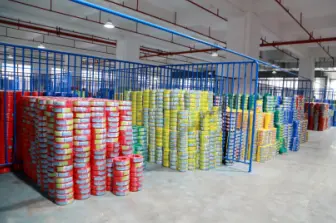The Performance and Use of Fire Performance Cable
With the development of the economy and the continuous improvement of people's living standards, the residential building industry is booming all over the country. Especially high-rise residential buildings are springing up like mushrooms in major and medium-sized cities. High-rise residential buildings, like other high-rise buildings and high-end hotels, impose more stringent operating conditions on the fire protection characteristics, safety and reliability of building wires and cables.
1. Requirements for fire performance cables in high-rise buildings
High-rise buildings require cables to have good characteristics, such as fireproofing, explosion-proofing, strong overload capacity, and long service life. Under fire conditions, fire elevators and fire pumps need to maintain normal operation for a certain period of time. After the cable is burned, it has low smoke, low halogen and low toxicity, and it should even be smoke-free, halogen-free, non-toxic and reach other special requirements. For such harsh operating conditions, cables made of general polymer materials cannot be used. In this case, fire performance cables have appeared one after another.
Wire and cable manufacturers have successively developed flame retardant cables, low-smoke and low-halogen flame retardant cables, low-smoke and halogen-free flame retardant cables, high flame retardant cables, and fire resistant cables. The performance of the BTTZ fire performance cable (fire performance cable for short) meets the requirements of modern buildings and has been widely used in high-rise residential buildings, office buildings, hotels, commercial buildings, etc., and has been well received by users.
2. The performance of fire performance cable
The causes of fire or burning of cables can be roughly summarized into two aspects: one is the spontaneous combustion of the cable body caused by the cable overload or short circuit; the other is the cable burning caused by an external fire source. Fire performance cables are not combustible at all, which is determined by the materials of the fire performance cables. The fire performance cable is composed of two inorganic materials, copper and magnesium oxide. The melting point of copper is 1083°C, and that of magnesium oxide is 2800°C, and both of them are non-combustible substances. These two materials also do not emit smoke, halogen gas and toxic gas. Therefore, the fire performance cable is unmatched by cables composed of other organic materials.
Latest News & Blog
 English
English  français
français  Deutsch
Deutsch  العربية
العربية  tiếng việt
tiếng việt  ไทย
ไทย  čeština
čeština  Indonesia
Indonesia  Eesti
Eesti  български
български  slovenčina
slovenčina 



